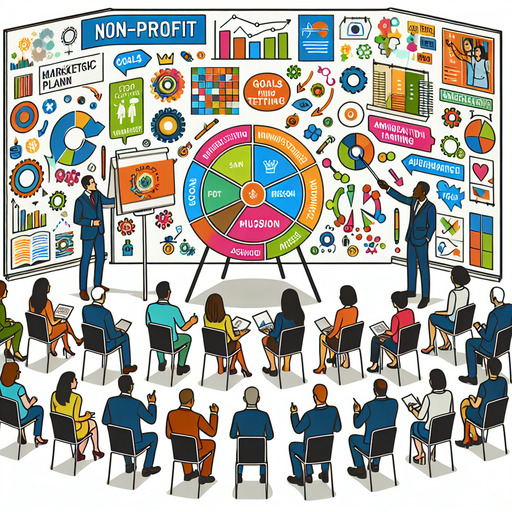
-
Table of Contents
Discover how to create an effective non-profit marketing strategy that drives impact and engagement. Learn more here.
Introduction
Creating an effective non-profit marketing strategy is essential for organizations aiming to maximize their impact, reach their target audience, and achieve their mission. A well-crafted marketing strategy helps non-profits build awareness, engage supporters, and drive donations and volunteerism. This guide will walk you through the key steps of developing a successful marketing plan, including understanding your audience, setting clear objectives, crafting compelling messages, leveraging multiple marketing channels, and measuring success. By following these steps, non-profits can boost visibility, foster community support, and make a lasting difference in their cause.
How to Create an Effective Non-Profit Marketing Strategy
Creating a successful non-profit marketing strategy is crucial for any organization looking to make a significant impact. Unlike for-profit businesses, non-profits focus on promoting a cause rather than a product. This difference calls for a unique approach centered on mission-driven messaging. Here’s a step-by-step guide to building an effective strategy:
1. Define Your Target Audience
The first step is identifying who you want to reach—potential donors, volunteers, or beneficiaries. Understanding your audience will help tailor messages that resonate emotionally and encourage action.
2. Craft Compelling Stories
Storytelling is one of the most powerful tools in non-profit marketing. Highlight your organization’s mission and real-life impact to engage supporters. Stories that evoke emotions often inspire people to donate or get involved.
3. Leverage Digital Marketing
Non-profit digital marketing allows you to reach a broader audience. Use social media platforms like Facebook, Twitter, and Instagram to share updates, success stories, and calls to action. Email marketing is also a powerful tool for staying connected with your supporters, sending campaign updates, and encouraging donations.
4. Focus on Fundraising Marketing
Fundraising is at the heart of non-profit marketing. Create targeted campaigns that appeal to potential donors’ emotions and values. Utilize social media, email, and traditional marketing channels to maximize reach. Donor engagement is critical—sending personalized thank-you notes and updates on how donations are making a difference can strengthen long-term relationships.
5. Build a Strong Brand
Non-profit branding is key to building trust and recognition. Your brand should include a clear logo, consistent color scheme, and unified messaging across all platforms. A strong brand can help set your organization apart and make it more memorable to potential supporters.
6. Utilize Non-Profit Advertising
Although non-profits often have limited advertising budgets, resources like Google Ad Grants offer valuable opportunities. Non-profits can receive up to $10,000 per month in free advertising on Google, which can significantly increase online visibility.
7. Explore Cause Marketing
Partnering with for-profit businesses through cause marketing can raise your non-profit’s profile while helping companies improve their corporate social responsibility. These collaborations can benefit both parties, increasing visibility for your organization and providing businesses with positive brand associations.
8. Focus on Outreach and Community Engagement
Building and maintaining relationships with your community, other organizations, and the media is essential for non-profit success. Outreach efforts can create new partnerships, generate more support, and expand your organization’s overall impact.
Q&A
1. What are the key components of an effective non-profit marketing strategy?
- Clear Mission and Vision: Define your organization’s purpose and long-term goals.
- Target Audience Identification: Understand and segment your audience to create tailored messages.
- Compelling Storytelling: Use emotional narratives to engage and inspire your audience.
- Multi-Channel Approach: Use various platforms like social media, email, and traditional media.
- Community Building: Create a sense of community and encourage participation through engagement.
- Consistent Branding: Maintain a cohesive brand identity across all materials and platforms.
- Data-Driven Decisions: Use analytics to measure and refine your marketing efforts.
- Partnerships and Collaborations: Build relationships with other organizations and influencers to increase reach.
- Call to Action: Clearly define actions you want supporters to take, whether it’s donating, volunteering, or sharing.
- Budget Allocation: Maximize the impact of your resources by efficiently allocating your budget.
For more tips on non-profit marketing and how to effectively engage donors, check out this detailed guide on non-profit marketing strategies.